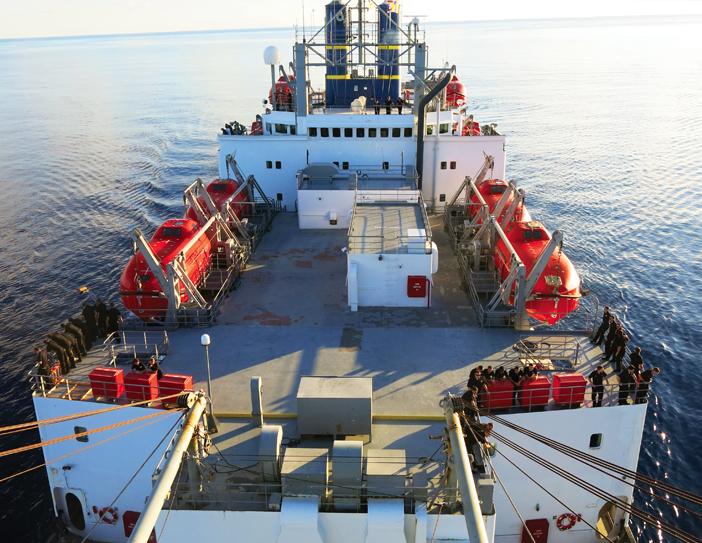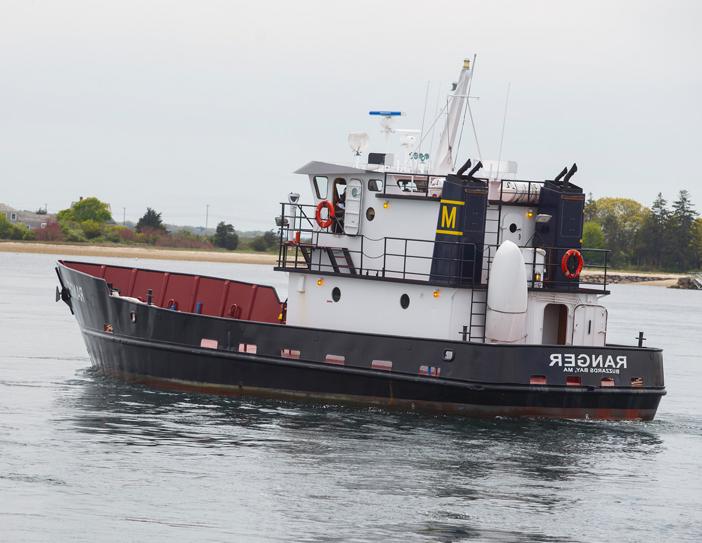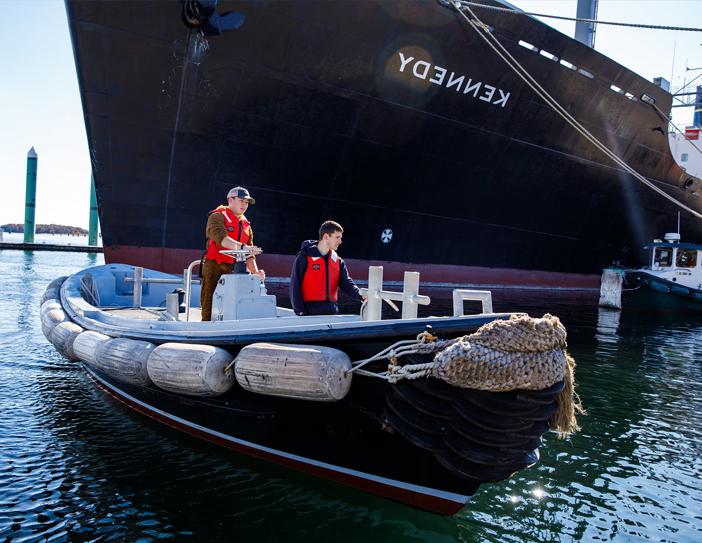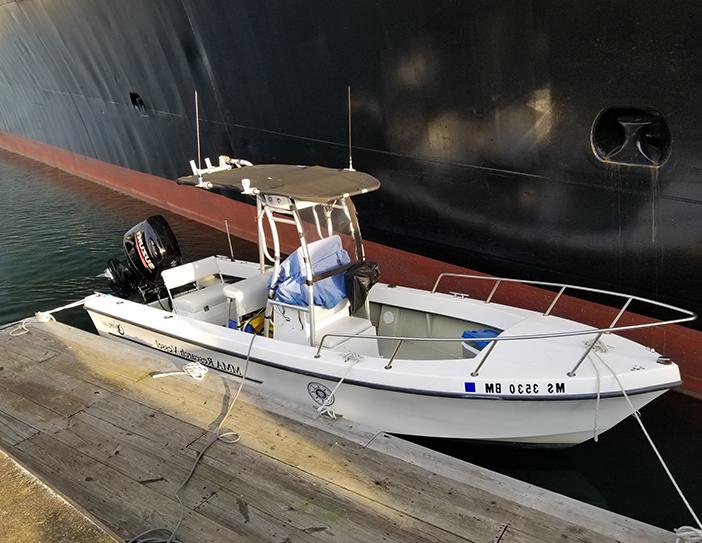Our Fleet
Training Vessels
In keeping with our learn-do-learn philosophy, 十大菠菜台子有一系列的训练船,你可以把课堂上学到的东西付诸实践.
USTS Kennedy
All Aboard for a Sea Term
Sea Term is a six-week, hands-on voyage. 轮机工程和海上运输专业的学员必须完成至少四门海上术语课程,通常在学期之间的1月和2月进行.
Sea Term为学员提供了通过课堂和实验室培训进行轮岗的机会. 培训范围从船舶操作、维护、站岗到演练.
一年级的学生和几十个船友一起睡在船舱里,而高年级的学员住在较小的船舱里. 不同的停靠港口提供了放松和放松的时间. The T.S. Kennedy sails to U.S. 和加勒比海的外国港口——包括巴拿马运河过境和赤道过境. 扬帆起航是培养独立和自信的机会. 所有专业的学生都有机会参加Sea Term项目,以满足他们在特定专业内的空间可用性和目标.


New Training Ship on its Way
$300 Million for a New Vessel
国会已经批准了3亿美元来取代十大菠菜台子的 USTS Kennedy with a new training ship.
十大菠菜台子应该共同庆祝在十大菠菜台子大学的如此可观的投资-这将有助于稳定马萨诸塞州海事十大菠菜台子的海事教育至少在未来四十年! 重要的是要知道,这项努力实际上为国家第二艘专门建造的替代船提供了资金,而这艘船应该是由五艘国家安全多任务船组成的舰队, or NSMVs. In fact, NSMV项目是全国六所州立海事十大菠菜台子长达十年的倡导运动的结果,他们步调一致地向华盛顿展示了十大菠菜台子的毕业生在国家经济和国防中发挥的关键作用.
NSMV计划得到了来自全国各地的数十名国会议员的热烈支持, including the entire Massachusetts delegation.
Other Training Vessels
We have a number of other training vessels. 从海洋研究,到船舶操作,再到引擎室,十大菠菜台子都能帮到你.

Alert
The Alert 26英尺90马力的单螺旋训练拖船是否用于小船操作、拖船和拖带训练.
T/V Ranger
Coastal Training Vessel
Built 1981, the coastal training vessel T/V Ranger is 71.3英尺长,24英尺宽,总重108吨. 她有24人的容量,双螺钉增强机动性和强大的700马力牵引. The Ranger 进行日常训练,让学员练习船舶操作和沿海航行技能.


Hercules
The Hercules is a 26 foot, 75马力双螺杆,灵活机动,用作训练拖船,用于小船处理和拖拖训练.
Ex-Navy 26' Motor Whaleboats
十大菠菜台子有七艘前海军26英尺的单螺旋桨捕鲸船. 这些古老的船只被美国海军用来运送人员, rescued downed pilots, and as a lifeboat. 学校将这些可靠的船只改作用途,训练学员如何操作小船, tug assist, and personnel transport.


Manned Models
十大菠菜台子的海事培训中心提供载人模型的高级船舶操作, 主要是为经验丰富的船夫,比如领航员准备的, Masters and OICNW. 参加者将会在以下主题上磨练他们的操船技巧:锚定, docking, undocking, slow speed maneuvering, experiment with movement of the pivot point, advance and transfer, passing in narrow channels, shallow water effect, wind effect, thruster work and much more. 不寻求STCW信贷的试点组织, 载人模型可用于各种船舶操纵训练演变.
Tall Ship
SSV ERNESTINA-MORRISSEY
The SSV Ernestina-Morrissey 是1894年在詹姆斯和塔尔造船厂为格洛斯特渔船队建造的. As well as being a fishing vessel, 在她漫长的历史中,她航行到距离北极600英里以内的地方, and later brought immigrants to the U.S. 1982年作为新独立的佛得角人民的礼物返回美国, 她作为一艘教育船航行到2005年.


26' Monomoys
学员们在这些26英尺的开放式小艇上进行团队划船训练. 所有USCG持证学员必须通过划船命令、小船操作和比赛. 这些船通常有8-10个桨和一个扫桨作为方向舵. 最初的单元船是为查塔姆岛附近的高浪区设计的, Massachusetts.
24' Crew Transfer Boat
24英尺双舷外发动机的卡塔琳娜海上小艇配有定制的船首改装,旨在模拟船员转移到海上风力涡轮机. 这艘船还用于支持石油泄漏应急培训和海岸研究.


8-ton Hydrokinetic Barge
The Academy has a special-purpose 8-ton, 25英尺x 35英尺的铝制双体船驳船测试水动力潮汐涡轮机. 它有一个17英尺宽的中央开口井,配有吊车,用于部署和回收潮汐涡轮机.
R/V Zostra
The Research Vessel Zostera supports the Marine Science, 安全与环境保护部沿海生态科学项目. 这艘22英尺长的船专为浅水调查而设计,甚至配备了电动垂直升降机“Jack Plate”。. 中控台T-Top有两个视频屏幕显示高清晰度水下摄像机馈送. 该视频通过全球导航卫星系统的Proteus V覆盖层传输. 这样可以精确地重新占用采样站. 船上备有全面水质、底栖Van Veen抓取器、水听器和类似的十大菠菜台子工具.

